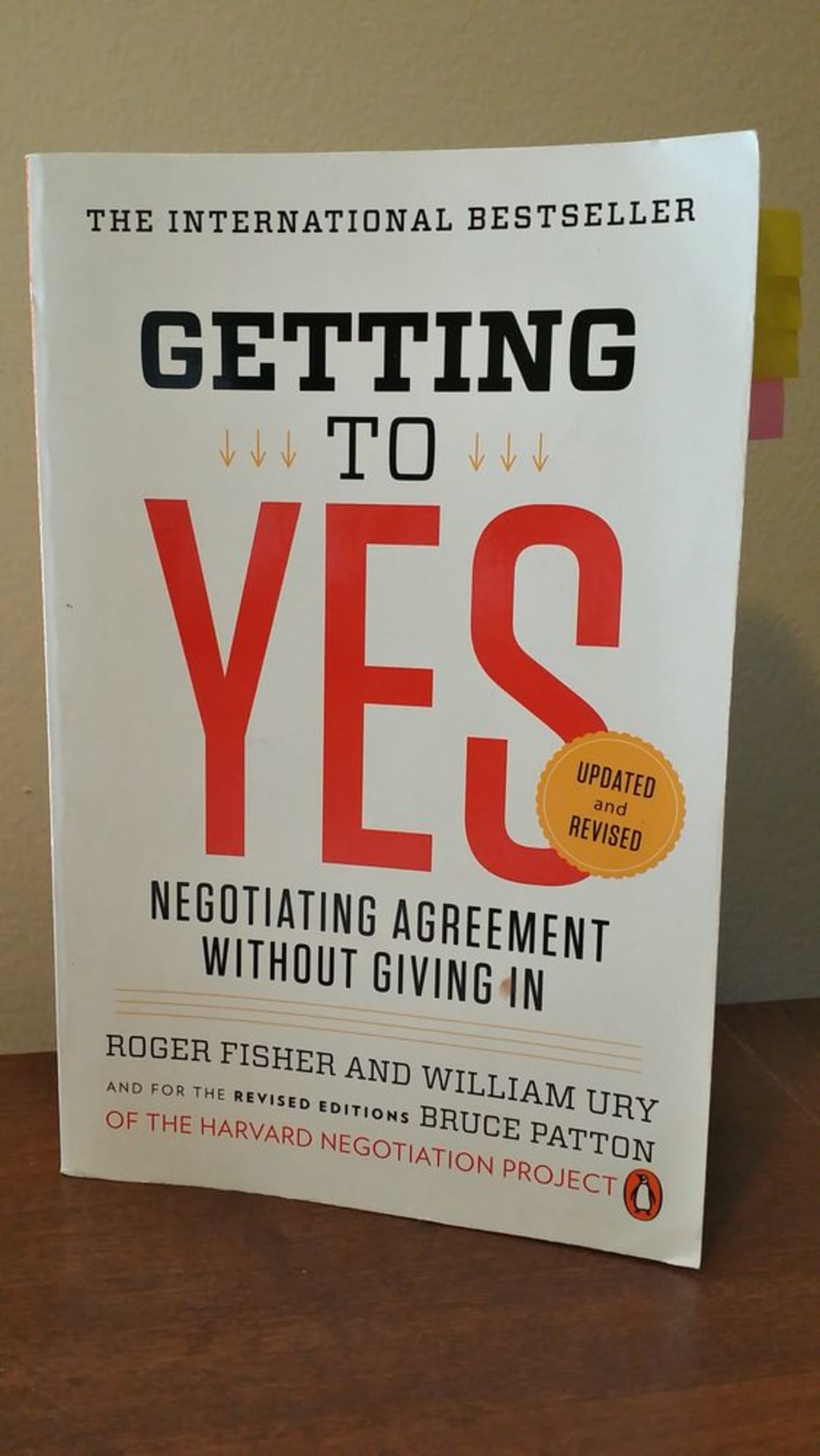Getting to yes
THE art of Negotiating win win Agreement

Getting to Yes: The Art of Negotiating Win-Win Agreements
Negotiation is a fundamental aspect of human interaction, shaping the outcomes of our personal and professional lives. Whether it's discussing a salary, resolving conflicts, or making business deals, the ability to negotiate effectively is a valuable skill. In the book "Getting to Yes: Negotiating Agreement Without Giving In" by Roger Fisher and William Ury, readers are introduced to a groundbreaking negotiation framework that focuses on achieving mutually beneficial outcomes. This article explores the key concepts and principles presented in "Getting to Yes" and highlights its relevance in today's world.
The central premise of "Getting to Yes" is that negotiation should be approached as a collaborative problem-solving process rather than a win-lose confrontation. Fisher and Ury introduce the concept of principled negotiation, which emphasizes separating people from the problem, focusing on interests rather than positions, generating options for mutual gain, and using objective criteria to evaluate proposed solutions.
One of the key insights of the book is the importance of understanding interests. While positions are the initial demands or proposed solutions, interests are the underlying needs, desires, and concerns that drive those positions. By identifying and addressing the interests of both parties, negotiators can move beyond rigid positions and explore creative solutions that meet the underlying needs of all involved.
Another fundamental principle outlined in "Getting to Yes" is the concept of inventing options for mutual gain. This involves generating a variety of potential solutions that satisfy the interests of both parties. By fostering a collaborative environment and encouraging brainstorming, negotiators can uncover creative alternatives that create value for all stakeholders. This approach allows for win-win outcomes, where both parties feel they have gained something of value.
The authors emphasize the importance of separating people from the problem. Emotions, egos, and personal dynamics often complicate negotiations. By focusing on the issues at hand and adopting a problem-solving mindset, negotiators can reduce defensiveness, improve communication, and build trust. This collaborative approach encourages active listening, empathy, and understanding, leading to more constructive and productive discussions.
"Getting to Yes" also highlights the value of objective criteria in negotiation. Rather than relying solely on personal opinions or subjective judgments, negotiators are encouraged to use fair standards and benchmarks to evaluate proposed solutions. This helps to depersonalize the process and provides an objective basis for decision-making. By using objective criteria, negotiators can establish a sense of fairness, increase transparency, and build credibility.
The principles and strategies presented in "Getting to Yes" have wide-ranging applications in various contexts. In business negotiations, this approach can lead to more profitable deals, stronger partnerships, and long-term collaborations. In personal relationships, it can foster understanding, compromise, and stronger connections. Moreover, these principles can be applied in political and international negotiations, helping to resolve conflicts and achieve peaceful resolutions.
The ideas presented in "Getting to Yes" continue to resonate today because they offer an alternative to the often adversarial and win-lose approach to negotiation. In a world that is becoming increasingly interconnected and interdependent, the ability to negotiate effectively and build mutually beneficial agreements is crucial.
Negotiation is not solely about achieving one's own goals at the expense of others. It is about finding common ground, building relationships, and reaching outcomes that satisfy the interests of all parties involved. By adopting the principled negotiation approach advocated in "Getting to Yes," individuals can transform the way they negotiate and build a foundation for more productive and collaborative interactions.
In conclusion, "Getting to Yes" is a timeless guide that provides valuable insights into the art of negotiation. By focusing on interests, generating options, separating people from the problem, using objective criteria, and fostering collaboration, negotiators can create win-win agreements that maximize value for all parties. Whether in business, personal
About the Creator
[email protected]/offical
dynamic and passionate content creator who is dedicated to inspiring and engaging audiences worldwide. With a flair for creativity and a love for storytelling, [Name] has made a name for themselves in the digital real ...NIKI DANI






Comments
There are no comments for this story
Be the first to respond and start the conversation.